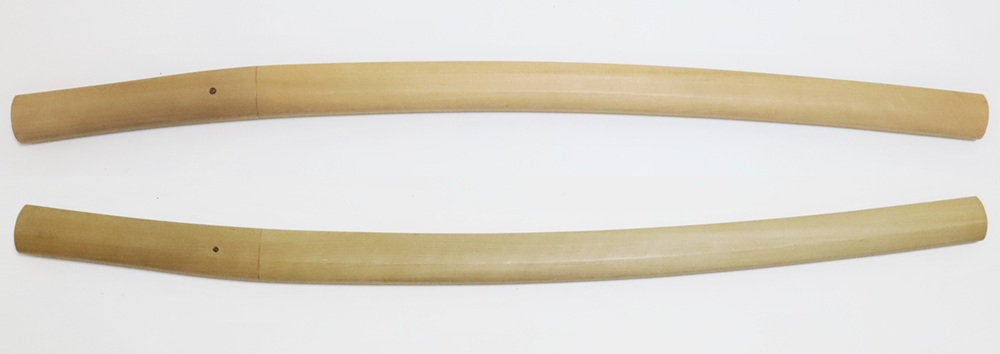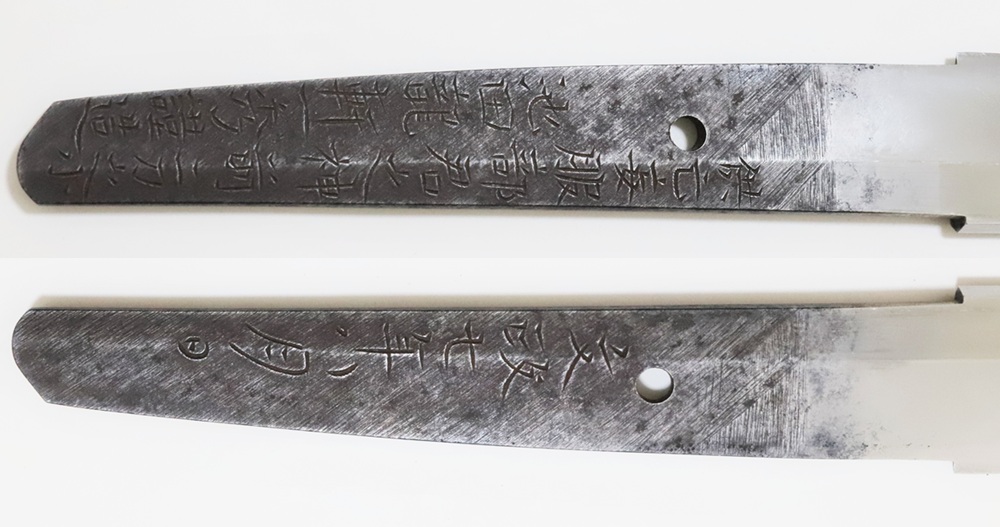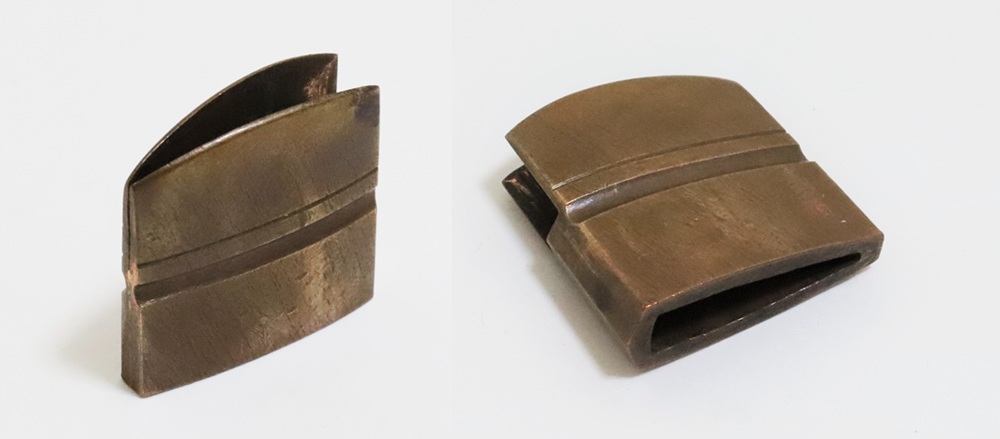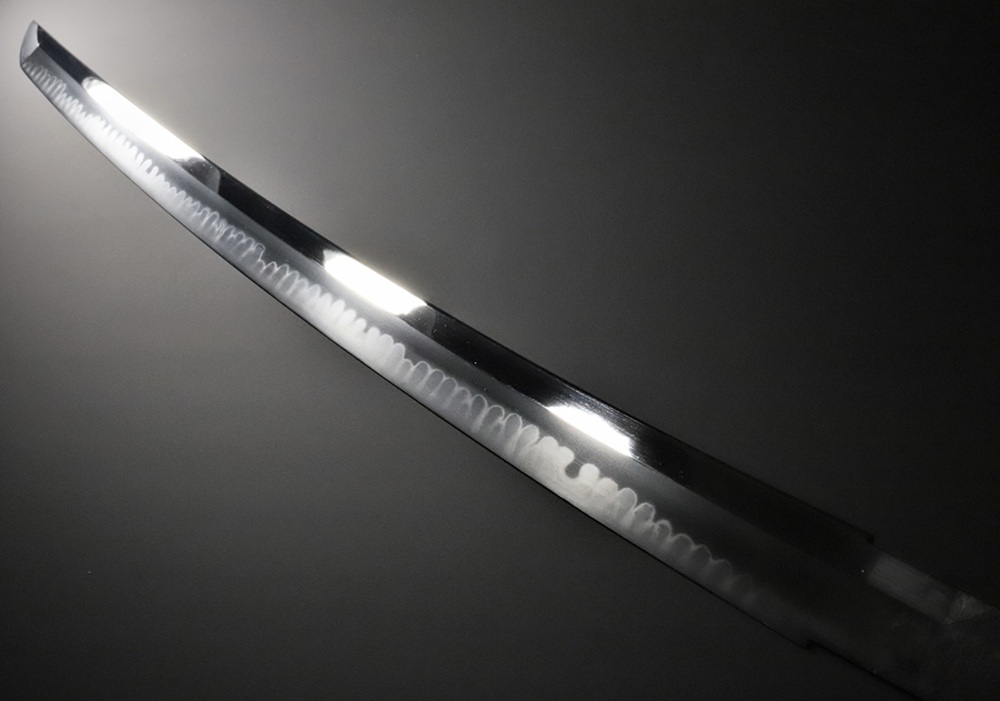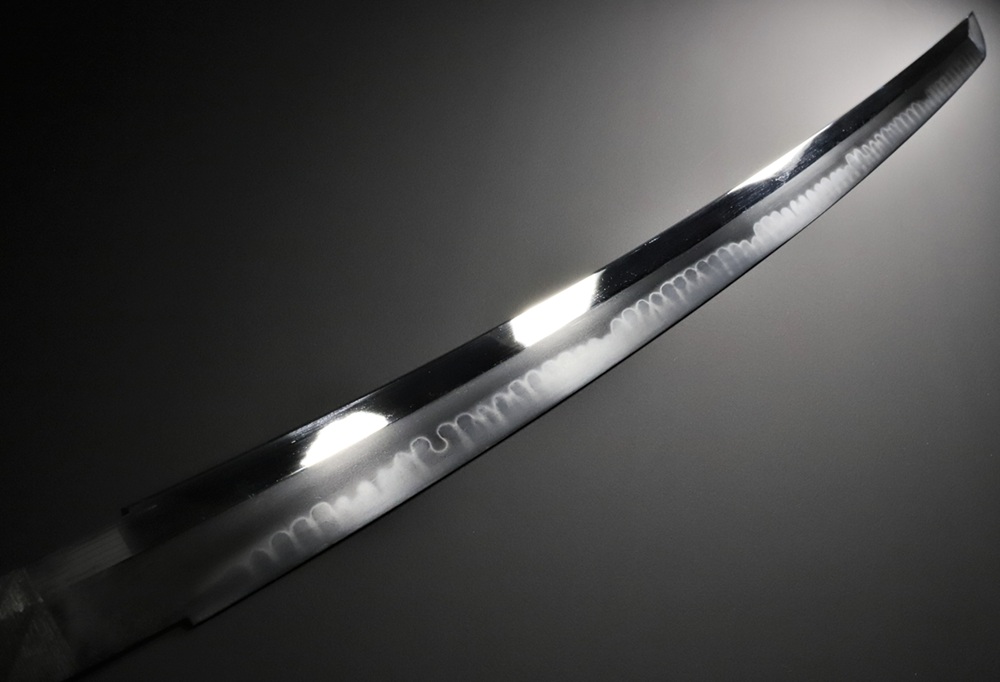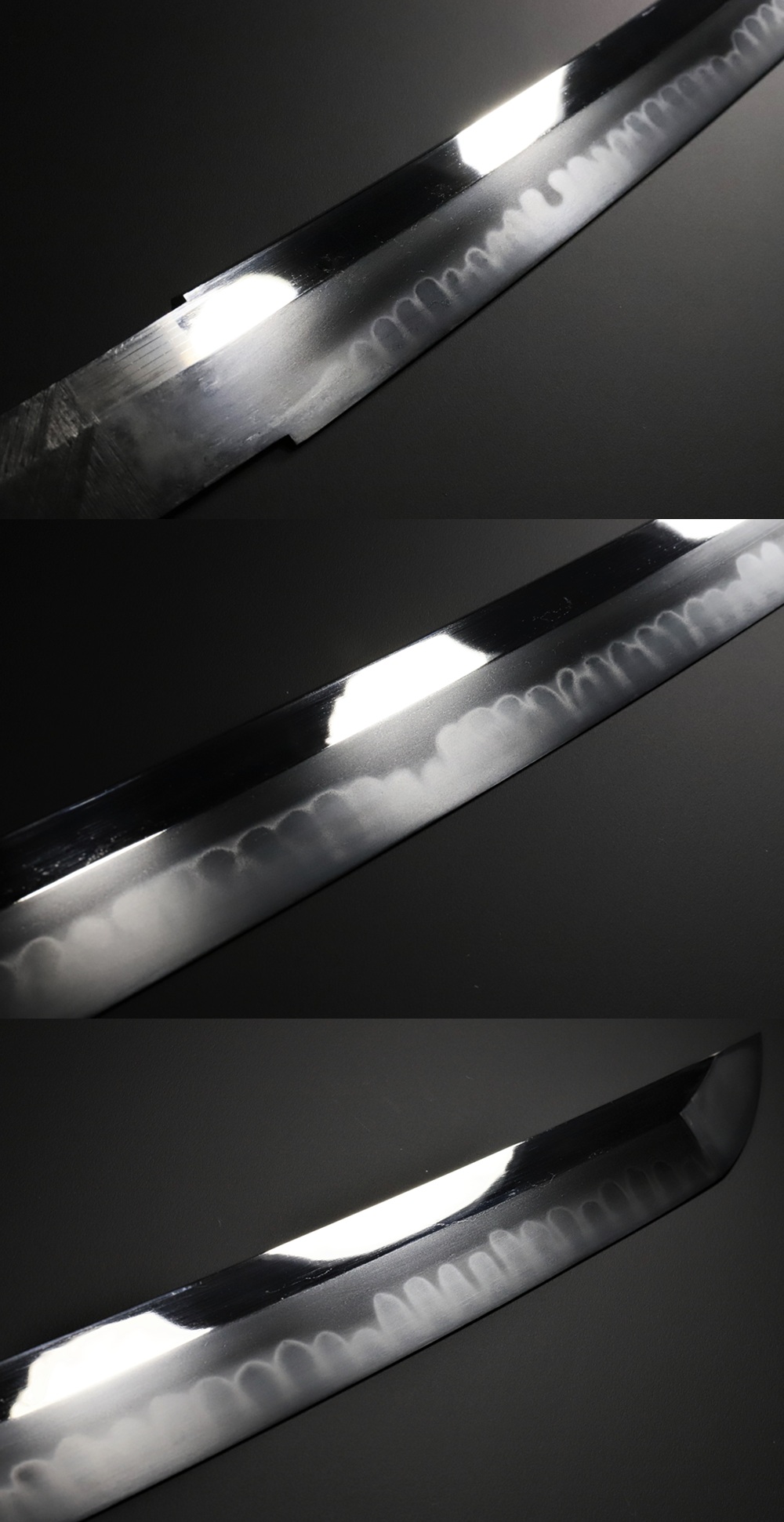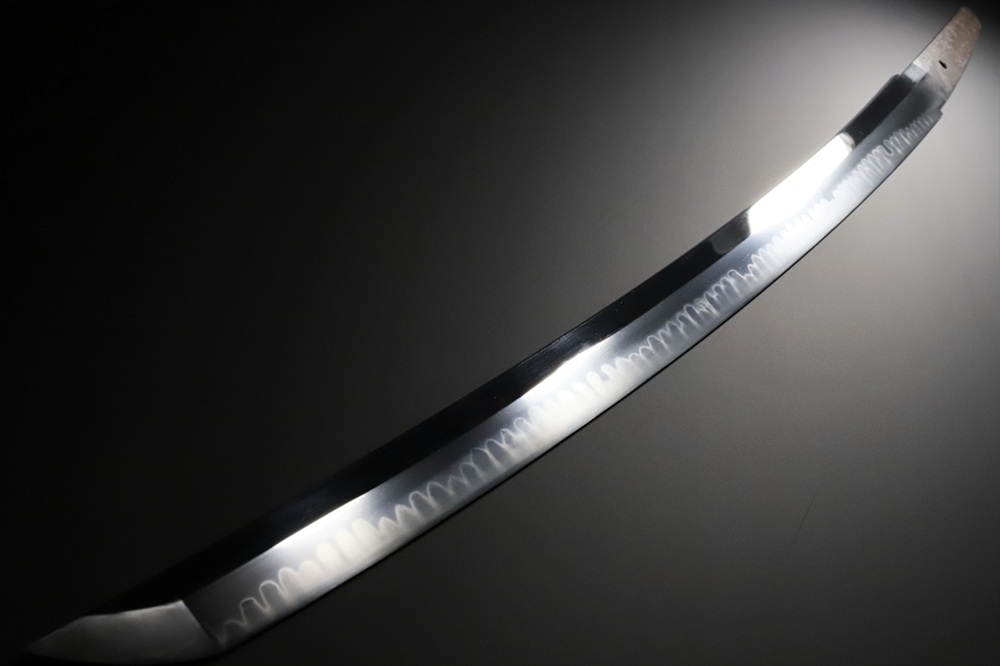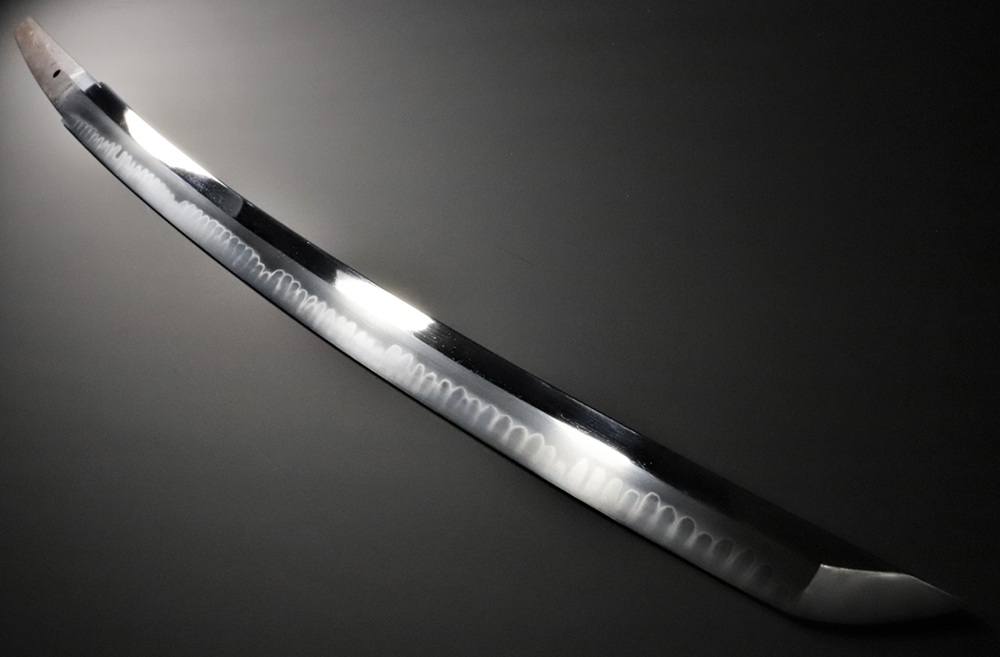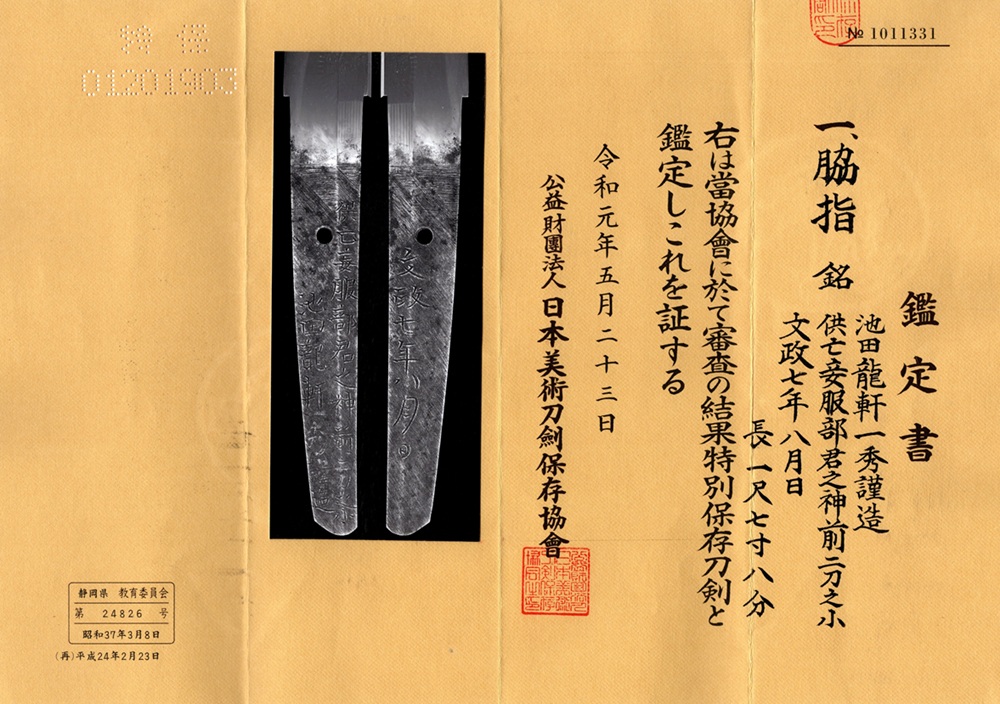
| Product No. WA-0801 池田龍軒一秀謹造 供亡妄服部君之神前二刀之小 | |
|---|---|
| Mei |
Respectfully made by Ikeda Ryuken Isshu. Offered as the short blade of katana at the altar of the deceased Hattori. Back: On a Day in August 1824, the 7th Year of Bunsei |
| Shape | Shinogizukuri Iorimune |
| Region | Tsuruoka, Dewa Province |
| Era | Late Edo Period |
| Length |
53.5 cm 21.1 in |
| Sori (curvature) |
1.1 cm 0.4 in |
| Motohaba |
3.2 cm 1.3 in |
| Sakihaba |
2.4 cm 0.9 in |
| Munekasane |
0.6 cm 0.2 in |
| Status | Tokubetsu Hozon Token |
| Certification Date | May 23, 2019 |
| Registration Authority | Shizuoka Prefecture |
| Registration Date | March 08, 1962 |
| Jihada (Metal pattern) | Koitame |
| Hamon (Temper line) | Choji-midare |
| Bōshi (Point / Tip) | Sugu Komaru turn |
| Nakago (Tang) | Ubu, Sujikai with kesho file pattern and a haagari-kurijiri end |
| Mekugiana (Rivet holes) | 1 |
| Habaki | Copper shonai type habaki |
Price |
SOLD |
| Ikeda Isshu [池田一秀] (the first Nyudo Ryuken [初代 入道龍軒]) was born in Shonai, Dewa Province in 1773. He studied under Suishinshi Masahide [水心子正秀]. In 1805, he became the official swordsmith for the Sakai family, the lords of the Shonai domain, and moved to Tsuruoka, near the castle. He worked hard as a domain artisan. He died in 1841 at the age of 69, and the leanage continued through three generations until the end of the Edo period. This wakizashi was made to a special order and has a ko-itame jigane, and the blade has a clear choji-hamon with each ashi approaching the cutting edge, made in 1824, when Isshu was 51 years old and at the peak of his craftsmanship. It is of excellent quality. It has passed the Tokubetsu Hozon Token shinsa in 2019. |


